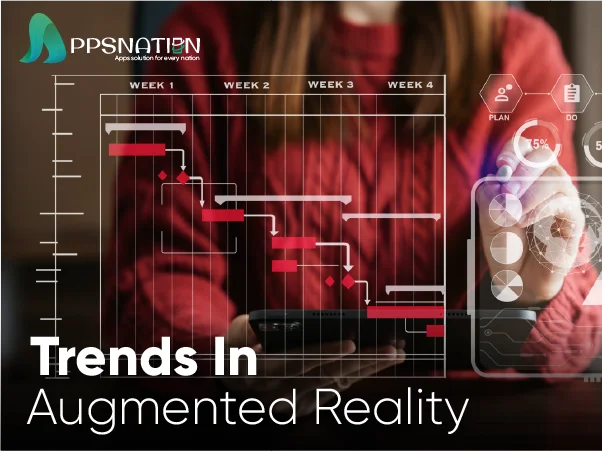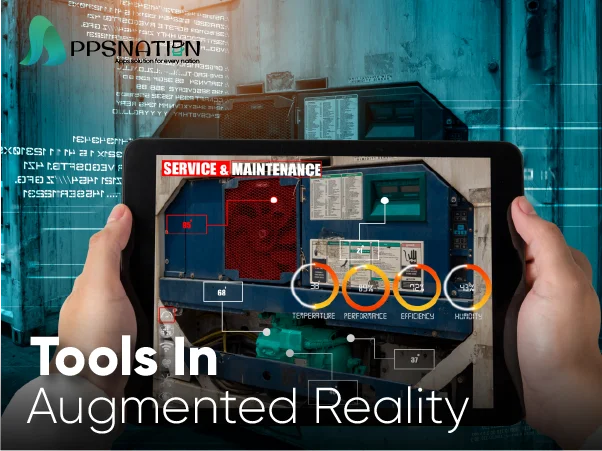Augmented Reality (AR) has come a long way since its inception, transforming the way we interact with the digital world. It merges virtual elements with the real environment, providing users with immersive and interactive experiences. As technology continues to advance, so does the world of AR development. In this article, we will explore the latest innovations and trends that are shaping the future of AR.
Table of Contents
| 1 | Introduction |
| 2 | The Evolution of Augmented Reality |
| 3 | Key Components of AR Development
|
| 4 | AR in Various Industries
|
| 5 | Social AR and AR Commerce
|
| 6 | AR Cloud and Spatial Computing
|
| 7 | WebAR: AR on the Web
|
| 8 | 5G and AR Synergy
|
| 9 | Artificial Intelligence and AR Fusion
|
| 10 | The Future of AR: Wearables and Smart Glasses
|
| 11 | Ethical and Privacy Considerations in AR
|
Introduction
Augmented Reality has become a transformative technology, impacting numerous industries and the way people experience digital content. It overlays virtual elements onto the real world, creating an interactive experience for users. Over the years, AR has evolved significantly, with constant innovations and advancements shaping its future.
The Evolution of Augmented Reality
AR technology has undergone a remarkable evolution since its inception. Initially, it was limited to experimental applications, but today, it finds practical use in various domains. From clunky headsets to sleek, user-friendly devices, the hardware and software behind AR have come a long way.
Key Components of AR Development
Hardware Advancements
Hardware plays a vital role in delivering seamless AR experiences. Manufacturers have been consistently improving processing power, display capabilities, and battery life of AR devices. Modern smartphones have become powerful AR platforms, bringing AR to the masses.
H1: Software Enhancements
Software advancements have been critical in refining AR applications. With better algorithms and computer vision techniques, AR apps can now detect real-world objects more accurately and overlay virtual content more precisely.
H1: Tracking and Localization Improvements
Accurate tracking and localization are essential for creating convincing AR experiences. Advancements in simultaneous localization and mapping (SLAM) technology have enabled better understanding of a user’s environment, leading to more realistic AR overlays.
H1: User Interface and Experience Refinements
User experience is a major focus in AR development. Intuitive user interfaces and natural interactions are crucial to ensure users can easily engage with AR content.
AR in Various Industries
AR in Gaming and Entertainment
Gaming and entertainment have been early adopters of AR technology. AR games like Pokémon GO have captured the imagination of millions, showcasing the potential of interactive AR experiences.
AR in Healthcare and Medical Training
AR has found practical applications in the healthcare sector, aiding medical professionals in training, surgery planning, and patient education. It enhances understanding and visualization of complex medical concepts.
AR in Retail and E-commerce
AR is revolutionizing the retail industry by enabling virtual try-ons, product visualization, and interactive shopping experiences. Customers can make more informed decisions, enhancing their shopping journey.
AR in Education and Training
AR has immense potential in education, transforming learning experiences by making them interactive and engaging. It allows students to explore complex subjects in a more immersive manner.
Social AR and AR Commerce
The Rise of Social AR
Social media platforms are integrating AR features, enabling users to add interactive filters, animations, and effects to their photos and videos. Social AR has become a fun and engaging way for people to express themselves.
AR in E-commerce
AR is revolutionizing the e-commerce industry by providing virtual try-ons and product visualizations. Customers can now make informed decisions and have a better sense of the products they intend to purchase.
AR Cloud and Spatial Computing
Understanding AR Cloud
The AR Cloud is a digital, dynamic 3D map of the real world, allowing AR devices to understand and interact with the environment better. It enables persistent AR experiences across locations.
Spatial Computing in AR
Spatial computing enables AR to anchor virtual objects in the real world accurately. This technology enhances the realism and immersion of AR applications.
WebAR: AR on the Web
Accessing AR through Web Browsers
WebAR allows users to access AR experiences through standard web browsers, eliminating the need for dedicated apps. It makes AR more accessible and user-friendly.
Advantages and Challenges of WebAR
WebAR offers various advantages, such as easy access and compatibility. However, it also presents challenges in terms of performance and device compatibility.
5G and AR Synergy
Impact of 5G on AR
The introduction of 5G technology has significantly improved data transfer speeds and reduced latency. This synergy enhances AR experiences, enabling more data-intensive applications.
Enhanced AR Experiences with 5G
With 5G, AR applications can leverage cloud-based processing and deliver more robust and realistic AR experiences with lower latency.
Artificial Intelligence and AR Fusion
AI Integration in AR Applications
AI integration in AR enhances object recognition, language processing, and user interactions, making AR experiences more intelligent and dynamic.
Advancing Interactivity with AI
AI-powered AR applications can respond to user actions and adapt their behavior based on user preferences, providing personalized and interactive experiences.
The Future of AR: Wearables and Smart Glasses
AR Wearable Devices
The future of AR lies in wearable devices that seamlessly integrate with daily life, providing information and context in real-time.
Smart Glasses Advancements
Advancements in smart glasses technology will lead to more lightweight, fashionable, and functional AR wearables.
Ethical and Privacy Considerations in AR
Ensuring Ethical AR Development
As AR becomes more widespread, developers must address ethical concerns, such as data privacy, user consent, and potential misuse of AR technology.





